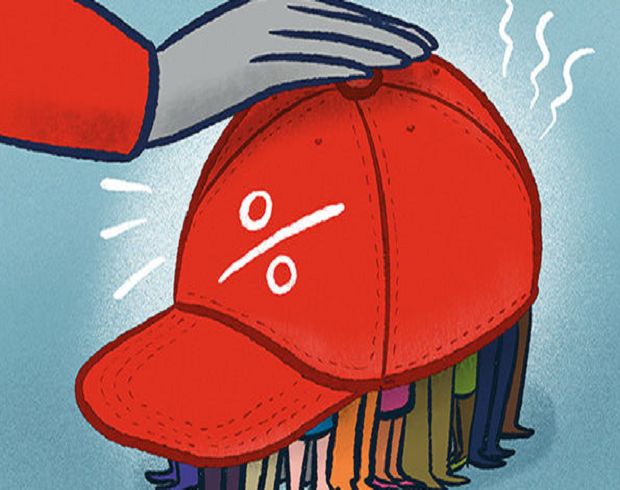“The road to a Kenyan hell is paved with good intentions” – Anonymous Parliamentarian
The IMF recently released a report titled “First Review of Kenya Under Stand By Credit Facility” in which a review of the effect of the interest rates capping on the Kenyan economy was undertaken. And it confirmed the warning that was consistently given by economists and bankers alike in the period leading to the signing of the interest rate capping bill in August 2016: Wanjiku is not getting loans from the banking industry. But we all knew that was going to happen, didn’t we? Perhaps I should define the “we” as those that were not drunk with the giddy excitement that parliamentarians had infected across credit addicted Kenyans: a fatal assumption that banks could be tamed by legislation into giving Wanjiku more money for less interest. The IMF report states and I quote, “International experience, however, shows that such controls are ineffective and can have significant unintended consequences. These would ultimately lead to lower economic growth and undermine efforts to reduce poverty. In addition, linking deposit and lending rates to the policy rate limits the central bank’s capacity to maintain price stability and support sustainable economic growth.”
In Wanjiku-speak, the IMF tells us that central banks globally are responsible for the monetary policy of countries. They use interest rate tools to increase or decrease money supply in the country in order to manage inflation and stimulate economic growth. In Kenya, that tool has been the Central Bank Rate (CBR). Now when that tool is used as a benchmark to lend money at the same rate to both platinum and God-knows-if-they’ll-repay-us borrowers, the obvious tendency will be to cut off the latter like the gangrenous arm that they are. Here’s an example. Jim runs the supermarket at the corner. You’ve watched him start that business from a small 100 square feet shop at the shopping centre to 5,000 square feet of retail space. He comes to you for a bridging loan as his bank has accepted to give him a loan but there’s a bit of paperwork that has to be completed. He expects to repay you when the bank credits his account in the next two weeks. Peter, who lives across the road from you, is a habitual drunk and has been fired three times in the last five years. He wants you to loan him some money and promises to repay you when he receives his salary, since he now has a new job. Who will you lend to and why? Before the interest rate caps, if you were flush with cash you would lend to Jim at say 15% and were happy to extend that loan to a year because you knew that he would repay it with the cash flows from his business, even if the bank loan didn’t come through. You might have considered lending to Peter, but at 30%, a higher rate to mitigate for the higher default risk. You also give him short repayment tenor of one month, as you know he may be fired any time.
What the interest rate capping has done is to force the banks to lend to both Jim and Peter at the same rate. And in most third world economies, there are more Peters than there are Jims in terms of quality borrowers, meaning that there will be more banks chasing fewer quality loans. Furthermore, by using the CBR as the benchmark, it has forced the Central Bank to be very cautious in how it uses that tool for monetary operations. If it drops the CBR, it causes bank interest rates to drop from an already precipitously low rate to an unsustainable level. Whatever little lending is occurring already will simply come to a shuddering halt. The interest rate capping law essentially forced the Central Bank to play football with both hands tied behind its back.
The Central Bank issues a quarterly report titled The Credit Officer Survey and is used to establish the lending behavior in the banking sector. The report is issued at the end of every quarter and essentially requests banks to submit information on eleven economic sectors on items like credit standards for approving loans, demand for credit and interest rates amongst others. The last published report is for September 2016, and I am assuming that the department responsible for its publishing is crossing the T’s and dotting the I’s in what will most certainly be a revealing December 2016 report. The Q3 survey showed that demand for credit increased in the Trade, Personal/Household and Real Estate sectors compared to the previous quarters. In other words, your entrepreneurs, salaried payroll check off workers and homebuyers were borrowing more in that particular quarter. But it wouldn’t be for long.
As I couldn’t get the biblical truth in the form of the Q4 report, I decided to do a soft survey in my networks within three Tier 1 banks in Kenya. All three banks had virtually stopped unsecured lending in the SME sectors. All three banks had also stopped salary check off loans unless they had express agreements with the corporate employers where the banks were handling the payroll. In simple words, your entrepreneurs and your salaried workers are not getting loans as much as they used to. One bank said that for the first time in memory, they had negative growth in their loan book: the monthly loan repayments outstripped new loan drawdowns, which simply means that their loan book was shrinking. In the Q3 Central Bank report, total loans to total assets had slightly reduced by 2% from 61.16% to 59.17% from the preceding quarter. You should expect this reduction to be significantly higher in the Q4 report as the asset mix moves in favor of short-term government assets.
Parliament can try and legislate interest rates, but they cannot legislate appetite. Banks cannot be forced to lend, they can only be encouraged to do so via central bank driven monetary policy incentives. Parliament may have had the best intentions, but they’ve created an economic hell. Once the shine has worn off the cheap bauble that is the interest capping law, the glaring truth has been revealed. The impact will be devastating to the Kenyan economy.

 carolmusyoka consultancy
carolmusyoka consultancy
 @carolmusyoka
@carolmusyoka

